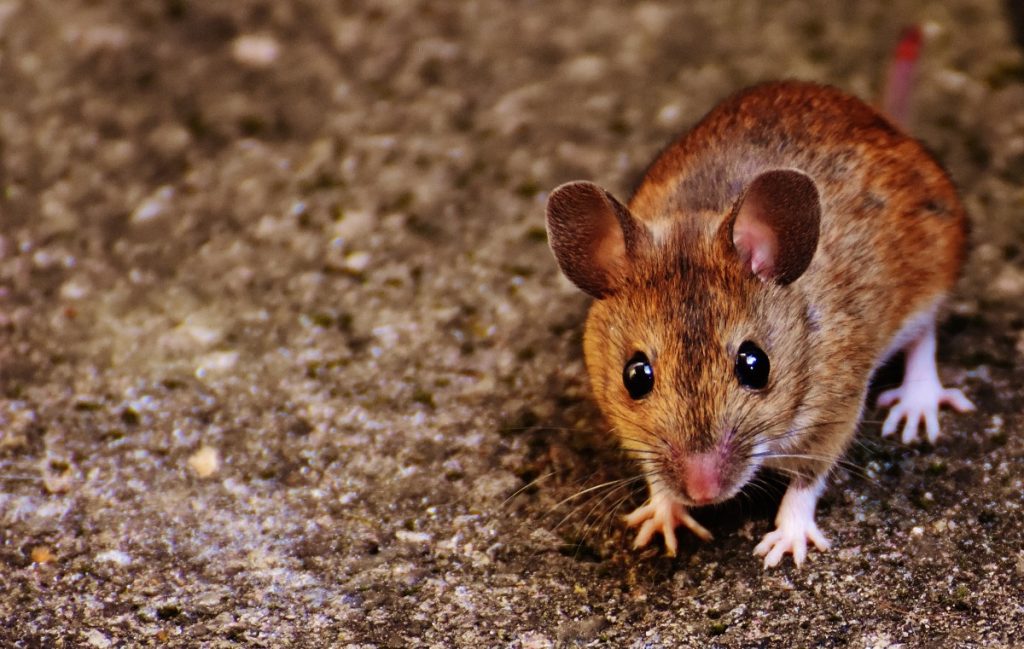Vaccine Simulations
Informing effective and safe implementation.

Lassa Virus in Sierra Leone and Guinea
Lassa fever is endemic throughout much of West Africa where it imposes a substantial burden on human health (Bausch et al. 2014; Basinski et al. 2021). The disease is caused by a single-stranded bi-segmented RNA virus (family Arenaviridae; Lassa mammarenavirus). Although human-to-human transmission is rare, spillover occurs regularly through human contact with the urine or feces from infected rodents. It is now well established that the primary rodent reservoir of Lassa virus is the Natal multimammate mouse, Mastomys natalensis, and that disease incidence increases during low rainfall months (dry season) as rodents move into human dwellings in search of food (Lecompte et al. 2006; Fichet-Calvet et al. 2007). This process leads to seasonal outbreaks across West Africa. Because no human vaccine yet exists, efforts to reduce spillover have largely focused on reducing contact with infected rodents. Unfortunately, the extremely high reproductive capacity of the reservoir has undermined these efforts, making rodent culling ineffective and traditional wildlife vaccination unlikely to succeed due to rapid dilution of immunity.
Our team is developing a new strategy for controlling challenging zoonotic pathogens such as Lassa virus that engineers a benign and species-specific herpesvirus to sweep immunity through the reservoir population and maintain it in the face of rapid population turnover (Murphy et al. 2016; Bull et al. 2018; Nuismer and Bull 2020). Specifically, our strategy develops vaccines capable of self-dissemination, allowing them to economically immunize hard to reach populations that would be impossible to access with traditional vaccines. Although these vaccines are not yet ready for use in wild populations, we are laying the groundwork for their eventual application by quantifying how well they will work, how best to deploy them, and where to deploy them to maximize the benefits to the human population. To this end, we have developed biologically informed and geographically explicit simulations that allow users to study the performance of a herpesvirus vectored transmissible vaccine targeting Lassa virus when introduced into the rodent reservoir within the West African countries of Sierra Leone and Guinea.
References
Basinski, A. J., E. Fichet-Calvet, A. R. Sjodin, T. J. Varrelman, C. H. Remien, N. C. Layman, B. H. Bird, D. J. Wolking, C. Monagin, B. M. Ghersi, P. A. Barry, M. A. Jarvis, P. E. Gessler, and S. L. Nuismer. 2021. Bridging the gap: Using reservoir ecology and human serosurveys to estimate Lassa virus spillover in West Africa. Plos Comput. Biol. 17:e1008811.
Bausch, D. G., L. M. Moses, A. Goba, D. S. Grant, and H. Khan. 2014. Lassa Fever. Pp. 261–286 in Singh, SK and Ruzek, D, ed. Viral hemorrhagic fevers.
Brouat, C., A. Loiseau, M. Kane, K. Bâ, and J.-M. Duplantier. 2007. Population genetic structure of two ecologically distinct multimammate rats: the commensal Mastomys natalensis and the wild Mastomys erythroleucus in southeastern Senegal: POPULATION GENETIC STRUCTURE OF MASTOMYS. Mol. Ecol. 16:2985–2997.
Fichet-Calvet, E., E. Lecompte, L. Koivogui, B. Soropogui, A. Dore, F. Kourouma, O. Sylla, S. Daffis, K. Koulemou, and J. Ter Meulen. 2007. Fluctuation of abundance and Lassa virus prevalence in Mastomys natalensis in Guinea, West Africa. Vector Borne Zoonotic Dis. 7:119–28.
Lecompte, E., E. Fichet-Calvet, S. Daffis, K. Koulemou, O. Sylla, F. Kourouma, A. Dore, B. Soropogui, V. Aniskin, B. Allali, S. K. Kan, A. Lalis, L. Koivogui, S. Guenther, C. Denys, and J. ter Meulen. 2006. Mastomys natalensis and Lassa fever, West Africa. Emerg. Infect. Dis. 12:1971–1974.
Simulation Development:
- Nathan Layman – Biological Sciences, University of Idaho
- Scott L. Nuismer – Biological Sciences, University of Idaho
- Andrew Basinski – Mathematical Biologist, University of Idaho
- Chris Remien – Mathematical Biologist, University of Idaho
Data Collection, Curation, and Analysis:
- Elisabeth Fichet-Calvet – Virology, Bernhard Nocht Institute for Tropical Medicine
- Brian Bird – One Health Institute, University of California-Davis
- Bruno Ghersi – One Health Institute, University of California-Davis
- Corina Monagin – One Health Institute, University of California-Davis
- Anna Sjodin – Ecology & Evolutionary Biology, University of Connecticut
- James Bangura – Project Coordinator/Sierra Leone, PREEMPT
- Yongai Bah –
- Alec Redwood – University of Western Australia
- Baca Chan – University of Western Australia
- Shelley Gorman – University of Western Australia
- Andrew Davison – Institute of Infection Immunity & Inflammation, University of Glasgow
- Jenna Nichols – University of Glasgow Centre for Virus Research
- Matej Vucak – University of Glasgow Centre for Virus Research
- Kyle Rosenke – U.S. Dept Health and Human Services, NIH
- Michael Jarvis – Virology and Immunology, University of Plymouth
Web Interface:
- Luke Sheneman – RCDS, University of Idaho
- Jennifer Hinds – RCDS, University of Idaho
- Jasbir Bhangoo – RCDS, University of Idaho
Additional contributions to conceptual development and implementation:
Our simulation approach relies on stochastic simulation of mathematical models that divide the rodent population by age class and infection status. Specifically, our modeling approach builds from the age structured SIR models of Lassa virus epidemiology developed previously by our team (Nuismer et al. 2020). These models are extended here to include a herpesvirus transmissible vaccine following the approach developed previously by our team (Varrelman et al. 2021). Explicit spatial structure is integrated by assigning each geographic location a birth rate and strength of density dependent rodent mortality as a function of remotely sensed environmental variables. Rodent movement between sites is assumed to occur at random with a rate informed by studies of rodent genetic diversity (Brouat et al. 2007).
Simulations are initialized by burning in rodent and viral dynamics for one thousand years. This allows the simulation to reach a quasi-steady state with seasonal fluctuations driven by precipitation as described in Nuismer et al. 2020. After initialization, the vaccination introduction schedule entered by the user is implemented, and the dynamics of the system tracked for a user-defined time period.
References
Bull, J. J., M. W. Smithson, and S. L. Nuismer. 2018. Transmissible Viral Vaccines. Trends Microbiol. 26:6–15.
Murphy, A. A., A. J. Redwood, and M. A. Jarvis. 2016. Self-disseminating vaccines for emerging infectious diseases.
Nuismer, S. L., C. H. Remien, A. J. Basinski, T. Varrelman, N. Layman, K. Rosenke, B. Bird, M. Jarvis, P. Barry, P. W. Hanley, and E. Fichet-Calvet. 2020. Bayesian estimation of Lassa virus epidemiological parameters: Implications for spillover prevention using wildlife vaccination. PLoS Negl. Trop. Dis. 14:e0007920.
Nuismer, S. L., and J. J. Bull. 2020. Self-disseminating vaccines to suppress zoonoses. Nat. Ecol. Evol. 4:1168–1173.
Varrelman, T., R. Christopher, A. Basinski, S. Gorman, A. Redwood, and S. Nuismer. 2021. The zoonoses end game: Quantifying the effectiveness of betaherpesvirus-vectored transmissible vaccines. Proc Natl Acad Sci USA. In Review.
